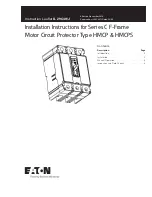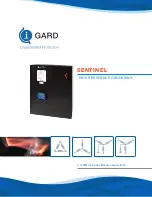
The blocking signal can also be tested in the commissioning phase by a software switch signal when
the relay's testing mode "Enable stage forcing" is activated (
General
→
Device).
The variables the user can set are binary signals from the system. The blocking signal needs to reach
the device minimum of 5 ms before the set operating delay has passed in order for the blocking to
activate in time.
Operating time characteristics for trip and reset
This function supports definite time delay (DT) and inverse definite minimum time delay (IDMT). For
detailed information on these delay types please refer to the chapter "General properties of a protection
function" and its section "Operating time characteristics for trip and reset".
Events and registers
The voltage-restrained overcurrent protection function (abbreviated "VOC" in event block names)
generates events and registers from the status changes in START, TRIP and BLOCKED. The user can
select which event messages are stored in the main event buffer: ON, OFF, or both.
The events triggered by the function are recorded with a time stamp and with process data values.
Table. 5.3.20 - 172. Event codes.
Event number
Event channel
Event block name
Event code
Description
7168
112
VOC1
0
Start ON
7169
112
VOC1
1
Start OFF
7170
112
VOC1
2
Trip ON
7171
112
VOC1
3
Trip OFF
7172
112
VOC1
4
Block ON
7173
112
VOC1
5
Block OFF
The function registers its operation into the last twelve (12) time-stamped registers. The register of the
function records the ON event process data for START, TRIP or BLOCKED. The table below
presents the structure of the function's register content.
Table. 5.3.20 - 173. Register content.
Date and
time
Event
code
Fault type
Trigger
current
Fault
current
Pre-fault
current
Trip time
remaining
Used SG
dd.mm.yyyy
hh:mm:ss.mss
7168-7173
Descr.
L1-E…L1-L2-L3
Start
average
current
Trip -20ms
averages
Start -200ms
averages
0
ms...1800s
Setting group
1...8 active
5.3.21 Volts-per-hertz overexcitation protection (V/Hz>; 24)
Generators, transformers, and motors have their own, specific volts-per-hertz ratios under which these
machines are expected to operate. Exceeding the V/Hz ratio results in machine overexcitation which
causes iron core saturation in generators and transformers. This causes a breakdown of the insulation
in the core's interlamination due to excessive voltage and eddy current heating. Additionally, stray flux
is induced into non-laminated components which are not designed to carry flux-caused currents. In
generators overexcitation typically occurs if the V/Hz ratio goes five percent above the nominal V/Hz
ratio, with any possible damage happening within seconds. The most common situation for
overexcitation is when a machine is off-line prior to synchronization.
A
AQ
Q-G215
-G215
Instruction manual
Version: 2.04
250
Содержание AQ-G215
Страница 1: ...AQ G215 Generator protection IED Instruction manual ...
Страница 399: ...Figure 7 4 241 Example block scheme A AQ Q G215 G215 Instruction manual Version 2 04 398 ...
Страница 421: ...Figure 8 14 264 Panel cutout dimensions and device spacing A AQ Q G215 G215 Instruction manual Version 2 04 420 ...
Страница 456: ...10 Ordering information A AQ Q G215 G215 Instruction manual Version 2 04 455 ...















































